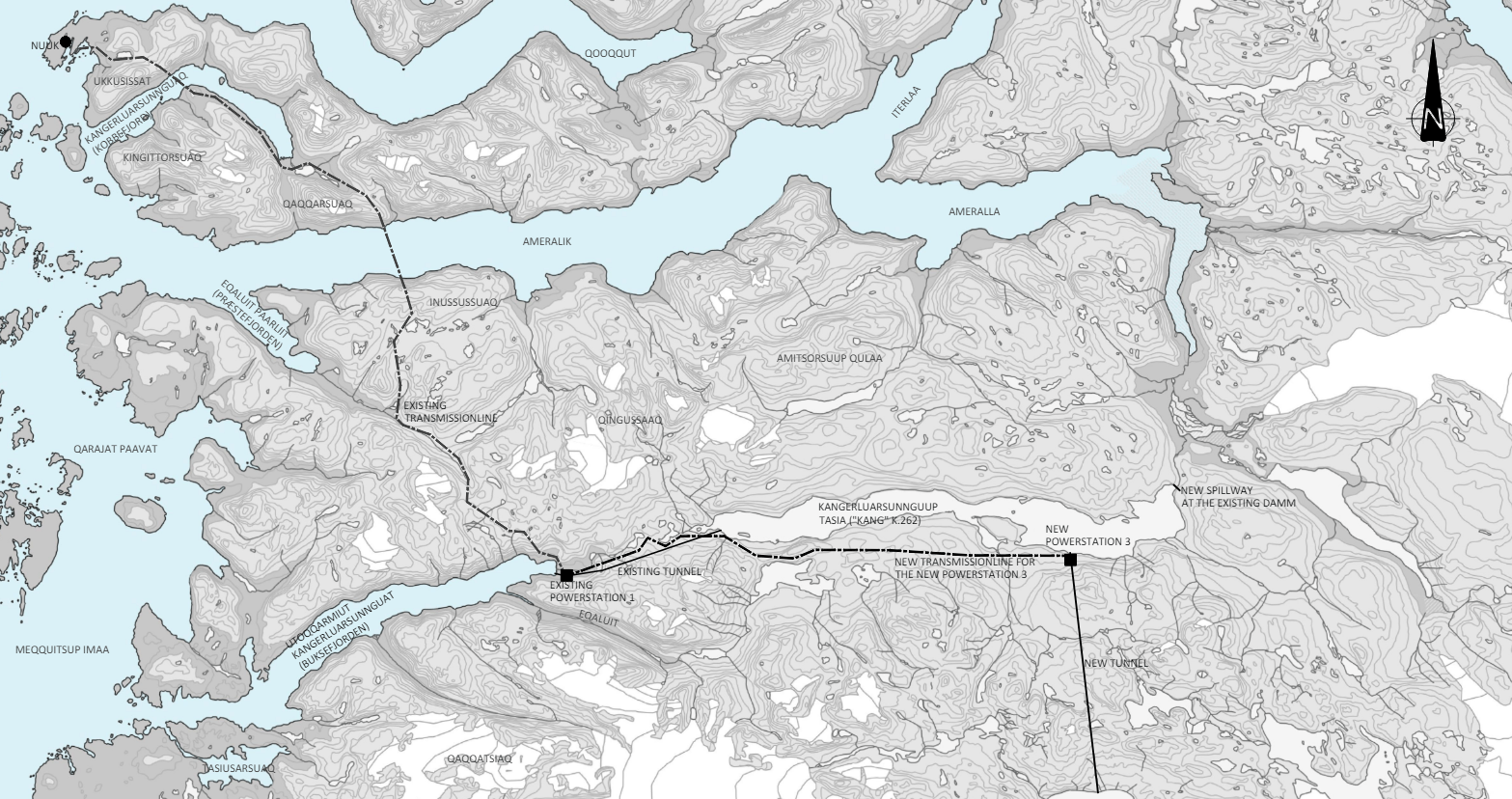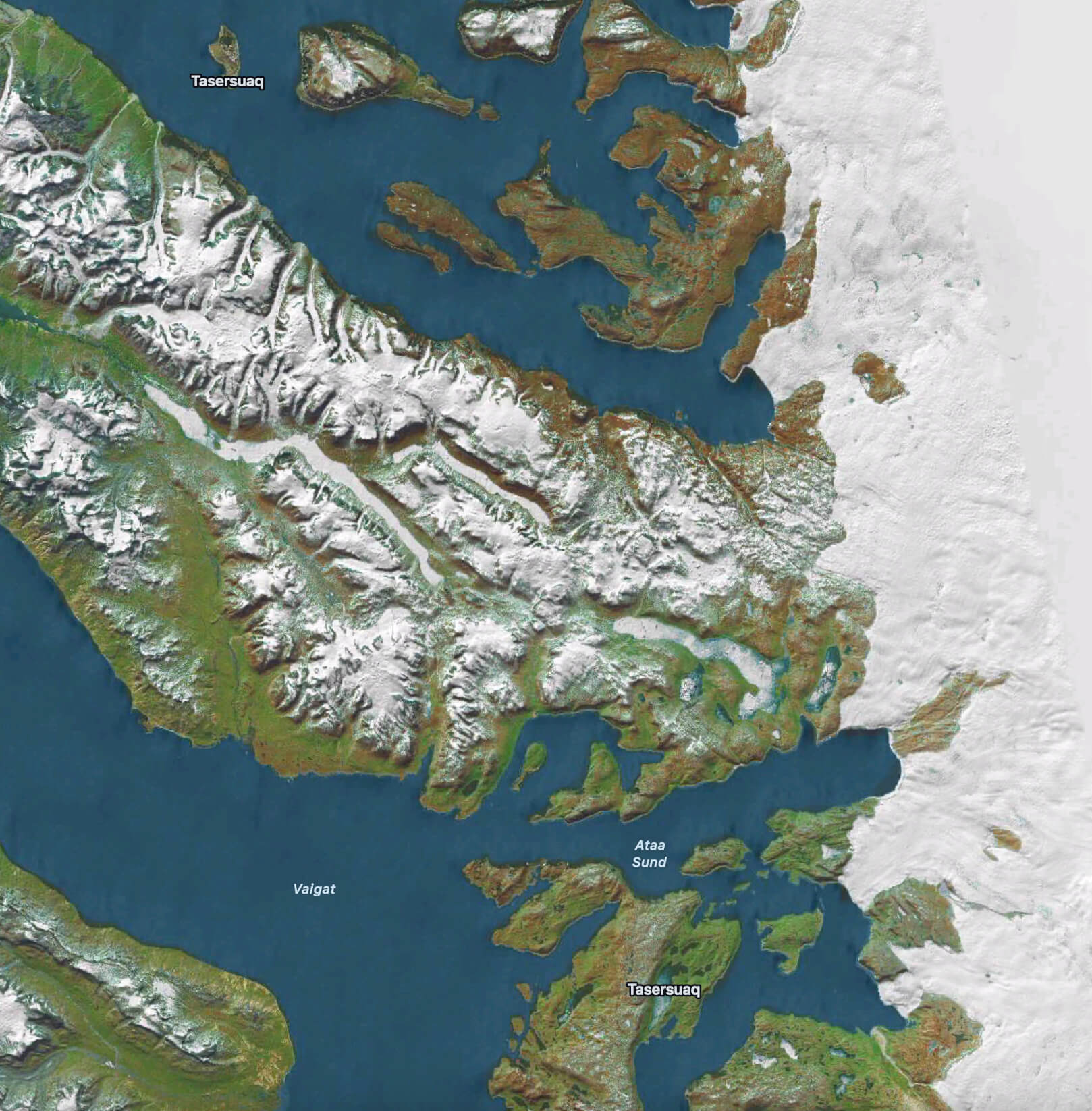In 2025, NunaGreen will tender the construction project for the expansion of the existing hydroelectric power plant at Utoqqarmiut Kangerluarsunnguat (Buksefjorden) near Nuuk.
The project includes the addition of a new power station by the lake Kangerluarsunnguup Tasia with new turbines with a total of some 76,9 MW in connection with a 16 km long transfer tunnel. The tunnel will connect two mountain lakes Kangerluarsunnguup Tasersua and Isortuarsuup Tasia and provide water for the new power station. The new power station will be connected to the existing power station with an approximately 37 km long transmission line with new substations.


In 2026, the construction of a new 22 MW hydroelectric power plant and transmission lines is expected in the Disko Bay area, south of Qasigiannguit.
The project includes constructing three turbine generators as well as connecting two natural mountain lakes in the area by a transfer tunnel of over 6 km in length. From the hydropower plant, a transmission line will run to a substation near Qasigiannguit, and another line will connect to a substation in Aasiaat. No dam will be built as a part of this project and a thorough environmental assessment of the Naternaq Ramsar site that the second transmission line runs through will be conducted to ensure minimal impact.
The hydropower plant will have a capacity of 22 MW and will provide electricity and heat to the households of Qasigiannguit and the nearby town of Aasiaat.
Greenland is the world’s largest energy island. It holds vast untapped renewable energy resources, including hydropower, wind energy, solar power, and in the future energy from waves and tides when the technology is developed.
The hydropower potential in the Tasersiaq area alone exceeds 7,000 GWh annually. When combined with other large-scale hydropower resources in West Greenland, the estimated power potential reaches 20,000 GWh.
These resources surpass Greenland's total energy demand, which means that Greenland can become a significant green energy exporter in the future.

At NunaGreen, we produce green energy for Greenland’s domestic use so that we can power the country with sustainable and affordable energy. As the future partner and producer of P2X products in Greenland, we aim to pave the way for the establishment of 100% green hybrid energy plants across the country.
In the global green transition, there is a particularly increasing focus on developing green value chains for the mineral sector. At NunaGreen, we seek to secure this value chain in our country so that we can provide affordable and reliable green energy to companies operating in this sector.
In the future, this will make Greenland a strong partner for the mineral sector, not least for the rare earth minerals that are essential in the global green transition.
